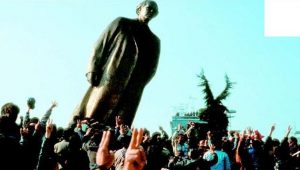In February 1991, a mob, mostly students, threw the 10 meters tall statue Hoxha, which had dominated the Tirana’s main square for years.
For the people, the dictator belonged to the past.
In March, about 30.000 Albanians seized ships in Durres and Avlona and sailed to Italy as refugees.
That month, multi-party elections were held for the first time in years. Although the Communist Party won, it was clear that the government no longer had absolute control.
Undoubtedly, this is the most characteristic image of the end of communist dictatorship in Albania.
However, the ordeal for the indigenous Ethnic Greek Minority of Northern Epirus (at the southern part of Albania), wasn’t -and still, it isn’t- over yet.
Now that, allegedly, democracy has been reinstalled in Albania, a “velvet ethnic cleansing” of the Greek minority is underway.
Source: himara.gr
Ask me anything
Explore related questions





